I have been working with the AD8232 ECG modules for a while now and I am trying to figure out what the raw ECG outputs from this module correlate to. I cannot seem to find any information from their datasheets as to what these output values represent and how I can go about converting them into millivolts (mV). It currently outputs analog values but essentially I want to know if there is a calculation to reverse these outputs back to the raw ECG that would have passed into the device.
Any assistance or guidance in converting these values to mV would be greatly appreciated.
For reference, here is a link to the datasheet: https://www.analog.com/media/en/technical-documentation/data-sheets/ad8232.pdf
